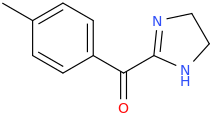You have to remember that when I studied medicinal chemistry, in-silico modelling didn't exist. People still built training-sets by hand, calculating the minimum-energy conformations but it was a VERY large undertaking. What ChemOffice will do in an hour would take many people many weeks of work. There are many tools for calculating docking conformity but like all in-silico models, they estimate and different tools will give different estimates. It's still likely to be the most efficient way to design new medicines but boy, do they throw up compounds that are complicated to make.
The fact that a drug that costs $100,000/Kg to make is only slightly better than one that only costs $1000/Kg to make is not considered, as far as I know. So while their is no argument that they ARE better, they aren't likely to be accessible by the majority of the peoples of the world.
Did you know that in the 1960s Janssen made a decision to stop researching the 3,3-diphenyl heptanone class of opioids in favour of the phenylpiperidine class because the latter is synthetically simpler. R-4066 was the kind of potency he sought but far, far too costly to make whereas fentanyl derivatives are quite cheap.
Since then a few other researchers have simplified the synthesis of 3,4-dihydro-2H-spiro[naphthalene-1,4'-piperidine] BUT it's still not cheap. I'm sure if Spiridone (or rather the acetyl ester of the methadol derivative) found a widespread commercial use, researchers WOULD find even cheaper routes as someone could get a royalty.
If you didn't know, their are specialist chemical companies who look at popular medicines and try to find cheaper syntheses. They don't MAKE the medicines, their income comes from selling or licencing their patented routes.
The entire drug development cycle is VERY complex indeed.




